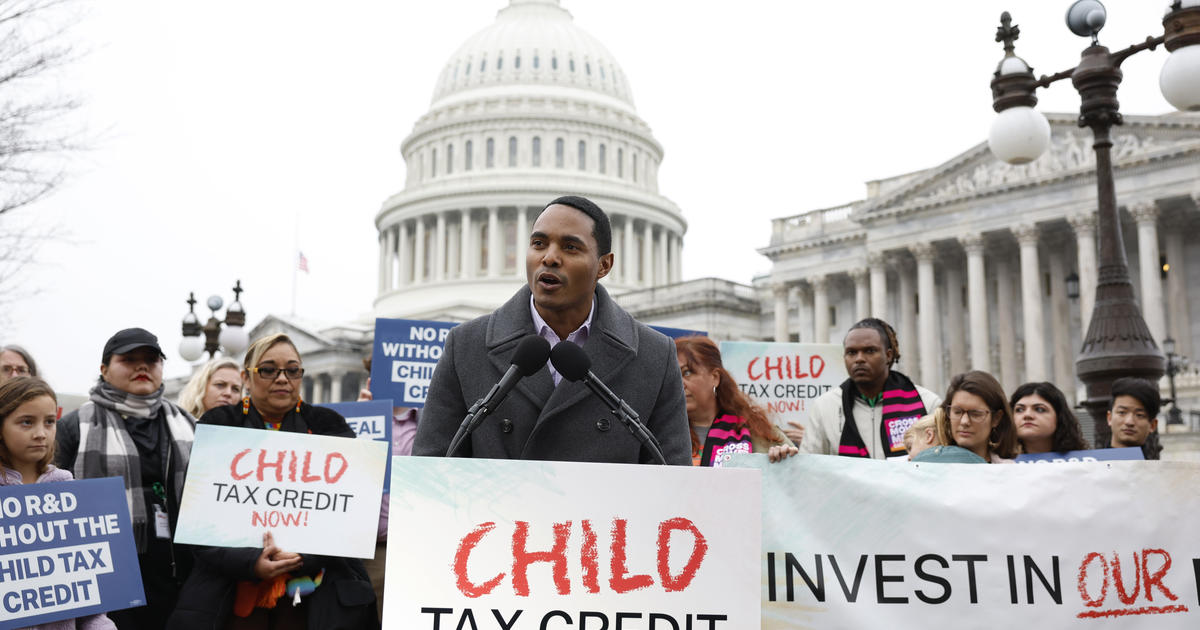The Child Tax Credit is one step closer to getting an overhaul, with the House on Wednesday approving a bill that would expand the valuable credit for parents as well as extend some business tax credits.
The bill, called the Tax Relief for American Families and Workers Act of 2024, was approved with bipartisan support in the House, and will head to the Senate next, although a date for a vote has yet to be scheduled .
The push to overhaul the tax benefit comes more than two years after the expiration of the expanded Child Tax Credit, which bolstered the tax credit to as much as $3,600 per child, up from its current $2,000 per child. Since that expansion expired, policymakers and anti-poverty advocates have pushed lawmakers to beef up the CTC once again, pointing to evidence that its pandemic-era expansion lifted millions of children out of poverty.
“In its first year, the Child Tax Credit proposal would lift as many as 400,000 children above the poverty line and give more financial support to an additional 3 million children in families with incomes below the poverty line,” noted Sharon Parrott, president of the Center on Budget and Policy Priorities, in a statement after the House passed the measure.
Some family advocates pointed out that the bill falls short of the CTC’s expansion during the pandemic, when half of the tax benefit was paid out via six monthly checks during the second half of 2021. That provided parents with hundreds of dollars per month for each child, extra money that was typically used for preschool, clothing and other kid-related costs.
The proposed expansion wouldn’t bring back the monthly checks to parents, but would make other important changes. Here’s what to know about the House bill.
Child tax credit details
The House bill’s CTC expansion would make it easier for more families to qualify for the Child Tax Credit.
That’s because the original CTC requires a parent to have at least $2,500 in annual income, which means that a family with little or no income may not qualify for the CTC.
Under the proposed changes, taxpayers could use their income from either the current or prior year in calculating the CTC, which is helpful if their income drops and they can’t qualify for the tax credit. This would go into effect with the 2024 tax year.
The new law would also fix an issue that limits the CTC for some poor families: The current CTC provides no credit for a family’s first $2,500 of income. For earnings above that amount, the CTC is based on multiplying a parent’s income by 15%. The new calculation would multiply the parent’s income by 15% as well as by the family’s number of children.
That’s an important change because it means families with two or more children and low incomes can qualify for a bigger CTC. Take the example of a single parent with two children who earns $13,000 annually, as outlined by the CBPP.
The current CTC limits their qualifying earnings to $10,500 because their first $2,500 of income isn’t counted. Multiply that $10,500 by 15%, and the parent’s maximum CTC is a credit of $1,575.
Under the proposedchanges, the parent could receive $1,575 per child because of the tweak to add the family’s number of children to the calculation. In effect, the parent’s CTC would double to $3,150 for each tax year.
How much is the new Child Tax Credit?
If the new tax deal is passed by the Senate, the CTC amount will remain at $2,000 per child. But a third tweak to the credit could mean that more families will get more money back in their tax refund.
That’s due to changes to the partially refundable nature of the CTC, which provides up to $1,600 back in your annual tax refund if you don’t owe taxes or you are getting a refund.
Under the proposed bill, the maximum refundable amount per child would rise to $1,800 in 2023, $1,900 in 2024 and $2,000 in 2025.
What else would change with the Child Tax Credit?
Millions of families would benefit from an annual adjustment for inflation in 2024 and 2025. For instance, if inflation is 5% for one of those tax years, the CTC would be adjusted upwards by $100.
Who gets the Child Tax Credit?
According to the IRS, children with a Social Security number and who are under the age of 17 by the end of the calendar year are eligible for the CTC.
Parents can claim the CTC for each qualifying child if the child has lived with them for more than half the year and can be claimed on their tax return as a dependent. The credit can also be claimed by foster parents as well as other relatives, such as grandparents or stepparents, as long as the child meets the IRS’ eligibility requirements.
The Center on Budget and Policy Priorities, which supports widening access to the CTC, estimates that 16 million children from poor households would benefit in the first year after expanding the credit. About 500,000 of those kids are in the families of U.S. veterans and active-duty service members, according to the left-leaning think tank.
Income limits for the Child Tax Credit
In addition to the eligibility requirements noted above, the CTC includes income limits.
High-income households may be limited in the amount they can claim from the CTC. Only single filers with adjusted gross incomes below $200,000 and joint filers with less than $400,000 can receive the full credit. The CTC amount is whittled down by $50 for every $1,000 above those thresholds.
When will the Senate vote on the Child Tax Credit?
Right now, there’s no vote yet on the schedule, but Senate majority leader Chuck Schumer said that he supports the bill and is “working with [Finance Committee chair] Sen. Wyden to figure out the best way forward,” according to CNBC.
While the House saw a rare moment of bipartisanship with the bill’s approval, it faces an uncertain path forward in the Senate. Some Senate Republicans have expressed concerns about the proposal’s cost and the possibility of bolstering President Joe Biden’s reelection bid. At the same time, some progressives argue that the CTC expansion doesn’t go far enough to support low-income Americans.



